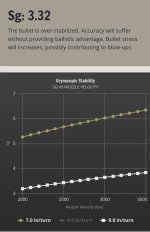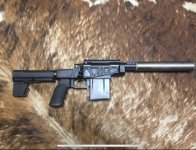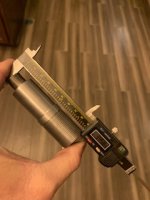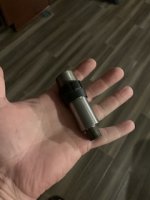Just sharing my experience so far with the ACME 265gr .30 cal bullets in .300blk. 11gr of CFE BLK chronographs almost exactly as advertised at around 1050fps. I loaded a box of 20 to test and was worried about the stability of those SUPER LONG bullets in my Ruger American Ranch .300blk rifle, but they put perfectly round holes in paper so baffle strikes are not an issue. And they are really quiet!
You have to run your bolt really hard and really fast or these bullets will nosedive and jam your action. It took me a few tries, but they cycle reliably if you just go for it and don't be gentle or shy about it.
As for whether or not it's wise to rely on that coating to protect your welded-baffle suppressor from lead buildup, I have no idea. For now, I'm taking off the Rugged Razor 762 and using my user-serviceable Obsidian 45 can. The baffles come perfectly clean with a 50/50 mix of Simple Green and water and a day or two to soak, but I've only fired a single box of this plus 100(ish) rounds of jacketed bullets before cleaning.
You have to run your bolt really hard and really fast or these bullets will nosedive and jam your action. It took me a few tries, but they cycle reliably if you just go for it and don't be gentle or shy about it.
As for whether or not it's wise to rely on that coating to protect your welded-baffle suppressor from lead buildup, I have no idea. For now, I'm taking off the Rugged Razor 762 and using my user-serviceable Obsidian 45 can. The baffles come perfectly clean with a 50/50 mix of Simple Green and water and a day or two to soak, but I've only fired a single box of this plus 100(ish) rounds of jacketed bullets before cleaning.





